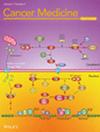Provincial Variation in Adherence to Breast Cancer Screening in Canada: Evidence From the Canadian Partnership for Tomorrow's Health
Abstract
Background
Breast cancer is the most commonly diagnosed cancer among women in Canada. Screening is effective in reducing breast cancer mortality through early cancer detection. However, data on individual social and medical characteristics contributing to variation in adherence to screening is limited.
Methods
Using multivariable logistic regression, we analyzed self-reported questions on engagement in screening mammography from five regions of the Canadian Partnership for Tomorrow's Health (CanPath), including the BC Generations Project (BCGP), Alberta's Tomorrow Project (ATP), the Ontario Health Study (OHS), Quebec's CARTaGENE, and the Atlantic Partnership for Tomorrow's Health Study (Atlantic PATH).
Results
The study population included 79,986 and 46,907 individuals aged 50–74 and 40–49 years at study enrollment, respectively. Most participants self-reported undergoing screening mammography less than 2 years from study enrollment, ranging from 77.8% in OHS to 86.3% in BCGP. Factors significantly associated with a lower odd of ever undergoing screening mammography were lower household income, being single/never married, current daily smoking, poor self-perceived health, no history of breast feeding, and ≥ 24 months since last routine medical check-up by a doctor or nurse. Among women aged 40–49 years with a first-degree family history of breast cancer (N = 4212 [8.9%]), the likelihood of ever being screened varied by region and was significantly lower among individuals with post menopause and more than 12 months since last medical check-up.
Conclusion
Factors associated with screening adherence that were identified in this study namely household income, self-perceived health, and routine medical check-ups should be considered as potential factors for targeting undeserved communities and increasing engagement in screening at both provincial and national levels. The observed variation in mammography among women aged 40 to 49 years with family history of breast cancer, may inform the current guidelines for potential benefits of early screening initiation.


 求助内容:
求助内容: 应助结果提醒方式:
应助结果提醒方式:


